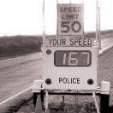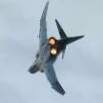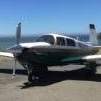-
Posts
6,797 -
Joined
-
Last visited
-
Days Won
85
kortopates last won the day on December 20
kortopates had the most liked content!
About kortopates
- Birthday January 21
Profile Information
-
Gender
Male
-
Location
San Diego, CA
-
Reg #
252AV
-
Model
M20K 252/Encore
kortopates's Achievements
-
At the time, Veronica (Chinese owner) was really keen on quality to promote the brand. It was a big reason why she bought the brand. Sent from my iPhone using Tapatalk
-
Thanks all excellent for maintenance practices. I assume you meant Fine Wires on the bottom were really important- which i agree. True about mixing them up between top and bottom but using two types makes rotating the plugs a bit of a challenge you don’t have just using all fine wires. I typically see a small gain in efficiency with a lower RPM like 2300 with same key number (combination of inches + RPM hundreds) as in a little less fuel for the same IAS and a little lower TIT. Sent from my iPhone using Tapatalk
-
kortopates started following Switch in Avionics Bay , “9,000 Exhaust valves” savvy article. , Mooney Keychain and 5 others
-
Back when i briefly worked for them we gave them away at shows along with other marketing toys. They were a lot better off in those days! Sent from my iPhone using Tapatalk
-
I am hesitant to make this discussion about FEVA because its a whole other topic. FEVA 1 was a deterministic model but the new FEVA 2 is entirely Predictive analytics which uses statistical algorithms and machine learning techniques to identify the likelihood of future outcomes based on historical data. Instead of just using data to analyze what happened, the goal of predictive analytics is to assess what is likely to happen in the future. It doesn't tell you will find a burnt valve but a probability seeing a burnt valve. The goal as such is to get us to borescope the valves so that we find a distressed valve while it can corrected by lapping before it needs replacing. A failing rotocoil or rotator is just one way a valve can burn. But we don't track that kind of data. But also again, burning exhaust valves has very little to do with how you manage the engine unless the pilot is ignoring CHTs and allowing them to escalate significantly above 400F on Continentals or above 420F on Lycomings. We have a small team that is constantly working on tuning the FEVA model to make it more accurate. But I agree in that while our FEVA 1 missed burned valves, or had lots of false positives, the newer FEVA 2 is overly pessimistic. But when the goal is to get us to borescope it helps to ensure we don't miss valve becoming distressed while we still have time to reverse the distress. The best thing we can do borescope valves at every oil change as some of my clients do and have been able to avoid burnt valves. But going back to what Marc said, any change out of the normal behavior of cruise flight, like formation flying, I believe is more likely to trigger it.
-
I totally agree on both points. A modern engine monitor is necessary to operate a HP engine with care but not sufficient to do so. Its a prerequisite essentially but the pilot/owner has to invest the time to learn about its operation as well as basic combustion science. Don't know if you've had the opportunity to attend a PPP where I give a talk on how to better utilize their engine monitor. But we have a big range of pilots with a monitor installed from those that don't use it outside of possibly downloading flight data to those that are very aware of what its telling them in flight and are very likely to save their engine in the unlikely event of pre-ignition or detonation. The exact opposite that I see too frequently is a pilot not noticing his/her oil pressure declining below the green arc and continues flying on till the engine seizes. As for tolerances in manufacturing, I'll use Continental as an example since you fly an Acclaim. Their cylinders are CNC'd without the fine tuning of lapping the valves in the cylinder which would be done by good over hauler before final assembly. Therefore it should be no surprise that some of the better engine builders building up a TCM engine will disassemble brand new TCM cylinders and at least work seats and valves while others will do more to balance flow. They re-work new cylinders before installing them on an engine they are warranting - unlike the factory.
-
Ray, those are great questions but not all easy to answer. I do know we have the data that should demonstrate my educated guess that how hard you run your engine in cruise should be the #1 factor in determining longevity. But I personally don't think how well you micromanage your engine in flight is all that important - but I ,may be misinterpreting your question. But what I am responding too is that the vast majority of pilots stick to single cruise profile for the majority of their flying. But those that don't operate higher than 65% power in cruise have the best chance for longevity; providing they fly frequently enough to keep corrosion at bay. I will add, without naming names, I have a few really smart Mooney client owners that know how to get the most power out of their fire breathing Turbo's safely - or as gently as possible running them at a much higher % cruise power LOP. Because they know exactly what they're doing they're not suffering from greatly shortened lifespan. But they still aren't getting the longevity of someone operating much more conservatively as Mike B recommends. But I believe this to an intentional choice of the pilot/owner making the age old choice tradeoff between speed/performance and longevity and willingness to accept that tradeoff. Afterall, most of us buy Mooney's to go fast and are willing to pay more per hour to be able to do so. At least IMO, there is no right or wrong answer here just lots of tradeoffs to consider and choices that we all make in our flying. But I do believe from my observations working with Savvy nearly 10 years working the Mooney fleet worldwide exclusively, that its much more important for a pilot to be quite knowledgeable on combustion science to be able to operate above 65% power as gently as possible on the engine (i.e. stay out of the red box of high ICPs). Since above 65% its not hard to mistreat the engine, but below you can't do any harm wrt to mixture. But it takes a lot of such events to probably result measurably in a shorter like span. But I no data to prove this; just my observations. Of course I have seen engines destroyed in minutes by some very crazy mistakes. About half of my time with Savvy is simply to help educate pilots in how to run LOP; which as an educator and CFI I am more than happy to do. When it comes to burning valves I have to say it rarely has anything to do with the pilot and generally totally out of the pilots control. Its much more the fault of the cylinder, lack of perfect concentricity of valve to valve guide etc. Its really not in our control except to monitor them and lap valves at an early stages of seeing a hot spot while it can still be reversed. I have some clients that borescope at every 25-35 hr oil change and lap any valve that shows distress of significantly reduced compression and a couple have cylinders going on 3500 hrs from doing so! I don't think I answered your questions directly but I hope that helped.
-
Exactly right. Successful in that no one was injured but her 231 was totaled and why she has an Ovation now. Your recollection of how long ago matches mine. Amelia was her user name i believe. I had always considered this SB but i had never experienced the jamming yet; so i hadn’t installed it. Well neither had she experienced any jamming till that last flight in her 231. So her unfortunate experience inspired me to install it. It was only a couple hours of my time during one of my annuals back then. It has nothing to do with what kind of AP you have but her BK KFC-200 was unable to unjam it for her. Hopefully this event that Don experienced will encourage more Mooney owners without it to get it installed - you just never know when it could jam otherwise. Sent from my iPhone using Tapatalk
-
The airspeed will keep the prop turning over and engine running till you’re at least exiting the runway or you give it some throttle. Sent from my iPhone using Tapatalk
-
M20J Forced Landing near KSPZ
kortopates replied to Mooney in Oz's topic in Mooney Safety & Accident Discussion
The steel cage is what keeps the cockpit from crushing but not what keeps you safe. It’s your seat belts with shoulder harness that prevents your body from slamming into the panel and glareshield and causing fatal blunt force trauma. I lost a nice fellow Mooney pilot and mechanic on my field years ago from a fatal crash. Looking at the wreckage you wouldn’t even think it would get totaled it was so intact. But not the occupants sadly - 2 souls lost. Sent from my iPhone using Tapatalk -
indeed, not what i was thinking. So that doesn’t eliminate it as having been associated with the panel at some point. I can’t tell what model or year from Tapatalk browser. Sent from my iPhone using Tapatalk
-
M20J Forced Landing near KSPZ
kortopates replied to Mooney in Oz's topic in Mooney Safety & Accident Discussion
The pictures sure leave you wondering what happened and what was going on! Gear was up but can't really tell about flap position and the prop sure is pretty twisted looking like maybe it had some power. The really good news is that everybody survived, even the dog with a broken rib. So eventually we'll be able to read the pilots personal account of what happened in the NTSB report. And eventually the pilot will likely get a new plane. -
LASAR combination Tie down / jack point install
kortopates replied to Boboli's topic in Vintage Mooneys (pre-J models)
Wingtip Sent from my iPhone using Tapatalk -
Very true, but only big Cessna’s get stolen south of the border but i do know of a C182 that was stolen as a consolation prize after they couldn’t figure out how to start a C210 with such a switch they took the 182 parked next to it. But i don’t think the cartel has ever had a need for a Mooney! Sent from my iPhone using Tapatalk
-
Have you tried looking through the logbook for its installation or asking the previous owner? It can’t be factory and if it’s not logged I’d be pulling it. It can’t be for anything you would need while flying, like backcourse switch or PC switch, or it wouldn’t be installed in the avionics bay. Sent from my iPhone using Tapatalk
-
So sad to read this. Although I never met him, in addition to Mooneyspace we shared a great many exchanges via Savvy and I always was impressed with how fit he kept himself. Can't believe he died so young!













